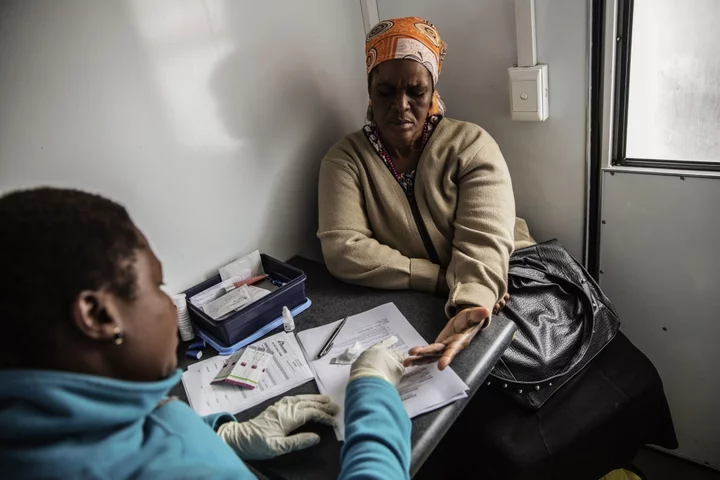South Africa, with the world’s biggest number of HIV cases, has in the past five years reduced the percentage of its population infected with the virus that causes the immune disease AIDS.
With an estimated 7.8 million people, or 12.7% of the population, living with the disease, the results of the 2022 South Africa HIV survey released Monday by the Human Sciences Research Council shows “South Africa is on the right track,” said Khangelani Zuma, the study’s lead investigator.
Still, the impact of the nation’s HIV epidemic disproportionately affects Black South Africans, women and young people.
The results are helping South Africa design nuanced and regionally specific programs and can provide “learnings” for other countries battling the scourge, he said.
Here are some of the main findings:
- Of people 15 years and older living with the virus in South Africa, 90% were aware of their HIV-positive status, 91% of those aware of their status were on antiretroviral medication, and the virus was suppressed in 94% of those using this therapy.
- The better uptake of treatment follows changes in 2016 guidelines stating that anyone with HIV could immediately access treatment, whereas previously only people that were already quite ill were being given antiretrovirals.
- By last year, half of all 15-24 year-old men were medically circumcised, compared to 43% in 2017. This is significant as studies have shown male circumcision can reduce the risk of heterosexual HIV transmission by about 60%.
- Even so, compared to men of the same age group, HIV prevalence was about two times higher in 15-24 year-old women and three times higher in 25-29 year-olds.
- While more babies are being born HIV-negative, because of gender-based violence and high teen-pregnancy rates, young woman are among the most vulnerable and preventing transmission in this demographic is central to further reducing infection in infants and children.
- As people with HIV live longer, the interplay with HIV and aging related diseases becomes increasingly salient and needs to be considered.
More than 27,000 households were surveyed between January 2022 and April 2023 across all nine of South Africa’s provinces. Funding for the study came from the US President’s Emergency Plan for AIDS Relief, which was initiated in 2003 by then-President George W. Bush.
(Updates with number of households surveyed in last paragraph)

